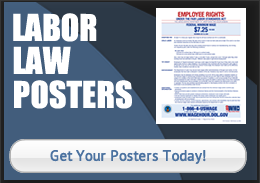Complete Story
12/19/2018
DRIVERLESS DELIVERY: AUTONOMOUS VEHICLES FOR GROCERY ARE ROLLING. COULD AUTO PARTS BE NEXT?
Source: Aftermarket Business World
While the media hypes up the potential of autonomous vehicles, individual drivers are still reluctant to embrace a technology that will be very expensive and still has bugs that could affect safety – recent autonomous or semi-autonomous accidents involving Tesla and Uber haven’t helped increase consumer confidence.
However, one market does seem bullish on driverless vehicles – the delivery space. Over the past year, a number of companies have announced autonomous vehicle delivery projects that are aimed at reducing some of the cost and complexity of last-mile delivery applications. This is an area where aftermarket parts distributors and retailers could potentially benefit, as tapping into these types of third-party delivery networks could reduce or eliminate the need to maintain their own local delivery fleet.
Back in January, Toyota unveiled its e-Palette platform for electric, self-driving vehicles, and announced a series of partnerships centered around autonomous delivery. So far, Toyota has partnered with Uber, Chinese company Didi (which is similar to Uber), Mazda, Pizza Hut and Amazon.
In the case of Amazon and Pizza Hut, both companies are testing driverless delivery systems. Pizza Hut announced that it could use the vehicles for delivery and even for mobile kitchen/food truck applications. Toyota and Pizza Hut are working on plans to improve the delivery ecosystem, and are also jointly testing dual communication technology in delivery vehicles to capture data on driver patterns and behaviors.
Ford and Domino’s have also tested a similar pizza delivery system using driverless cars. Nissan Motor co. is also planning a driverless van that can transfer packages from a central warehouse to individual homes.
Amazon has already been building out its logistics/shipping infrastructure across multiple modes. Initially the company has focused on delivering goods for its own vendors, but may eventually offer services that compete with FedEx and UPS.
The grocery chain Kroger co. has also partnered with startup Nuro (founded by veterans of Google’s self-driving car project) to test autonomous grocery delivery. The pilot was set to launch this fall. Nuro is creating a fleet of small, self-driving electric vehicles developed specifically to deliver groceries, pizza and other goods.
The Nuro vehicles (called the R1) differ from other types of autonomous vehicles in that they are not designed to hold human passengers or back-up drivers. They are essentially delivery robots that can travel up to 25mph. Customers can order groceries on Kroger’s website, which are then dispatched to their home. Customer are given a code that allows them to unlock the vehicle to retrieve their groceries when it arrives.
In the aftermarket, interest in self-driving delivery vehicles is still in wait-and-see mode. AutoZone has discussed how it might leverage autonomous vehicles, according to a Fleet Financials article that quoted AutoZone fleet manager Clay Gaudet.
At least one NAPA store, however, has tested out a driverless delivery solution from California-based Udelv. The company debuted its vehicles last year by making a delivery from a local Draeger’s Market in San Mateo, Calif. That company recently formed a deal in Oklahoma City to use its vehicles to deliver for a number of local grocery stores to customers in underserved markets.
Udelv uses modified GEM el XD electric trucks. A back-up driver rides in the vehicle, but they are otherwise remotely controlled and dispatched and are capable of Level 4 autonomous driving.
According to Udelv CEO and founder Daniel Laury, this type of infrastructure can make it faster and easier to schedule delivery, since the trucks can be dispatched at all hours by appointment, and can be directed to locations other than the customer’s home. “With autonomous deliveries, we can change the paradigm of delivery,” Laury says. “the consumer experience is going to be incredibly enhanced.”
The company has already made hundreds of deliveries, and Laury says that Udelv is receiving inquiries across a number of markets although they initially targeted grocery. That’s what drew NAPA to Udelv. “We have a few auto parts distributors working with us,” Laury says. “It’s a very interesting business. They deliver to the same clients several times a day, including dealerships and repair shops, which lends itself to this type of solution.”
The fact that autonomous vehicles can be dispatched 24/7 can improve the delivery experience. “It doesn’t’ cost any more money to deliver at 1 a.m. than it does at 3 p.m.,” Laury says. The back-up drivers in California are required to have be registered with the department of motor vehicles and have gone through a special training program.
The remote, teleoperations control system will be a key part of the system’s success, Laury says. “I believe that every autonomous driving company will need something like this, because there are circumstances when even the human driver is not going to be able to easily understand the environment,” Laury says. “We can intervene when the vehicle is stuck in a positon where the computer doesn’t know what to do.”
For example, if a truck is parked and blocking a lane of traffic, the autonomous driving system may be flummoxed, because it is programmed not to cross a double yellow line. The remote operator can view the problem via a camera and determine if it’s safe to pass the truck.
According to Laury, one of the major obstacles that he autonomous vehicle industry needs to overcome to make driverless delivery a success is the use of better 3D mapping. “The typical 2D map that Google Maps provides is not precise enough for these applications,” Laury says. “Depending on the size of your operating area, that could entail a lot of miles. Then you have to train the machine on those miles, and time becomes the obstacle. It takes time to make those maps and train the machine. Once it is trained, then you can start thinking about removing he driver. After that, there will need to be more advanced functional safety and redundancies in the vehicle. That means doubling up on the computers and sensors and actuators so that if one fails, another can take over immediately. Our vehicles are already implementing that type of functional safety.”





